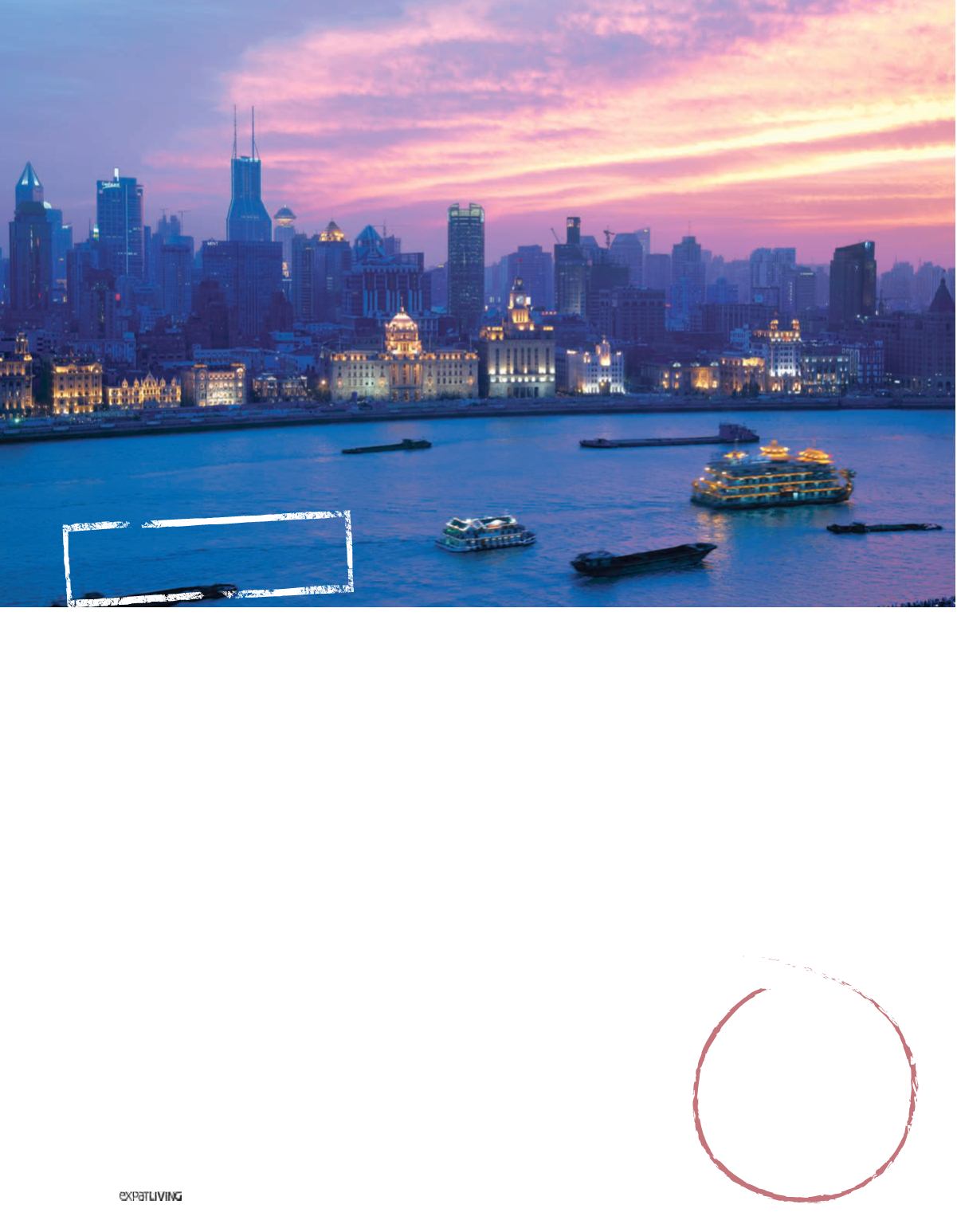

TRAVEL
268
October14
SEE
Many families travelling with children
bypass Shanghai in favour of Beijing,
because it has fewer landmark tourist
sights. But this cosmopolitan city of 23
million has much to entertain young
minds. Given that Singapore already
offers children great waterparks and
zoos, there’s not much point spending
time at similar attractions when there
are some of the world’s tallest buildings
and unique neighbourhoods to explore.
Though the landmark 468-metre
Oriental Pearl Tower
in Pudong is
no longer the city’s tallest building
(it was overtaken by the Shanghai
World Financial Centre in 2008), it does
house the impressive
Shanghai History
Museum
. Through models, dioramas
and special effects, it lays out the story
of the city from its beginnings as a village
1,000 years ago to global prominence
in the 1930s, along with its present-day
obsession with skyscrapers.
Also in Pudong is the semi-completed
Shanghai Tower
; at 632 metres, or 121
storeys, it will become theworld’s second-
tallest building when it is completed
next year. Across the
Huangpu River
(which is crisscrossed by 10 tunnels
and 10 bridges) is the 1.5km riverfront
promenade known as the
Bund
. Whether
you walk, drive or take a boat cruise
to see its 25 century-old buildings, it’s
handy to have a guide or a brochure with
information about each building.
The labyrinthine
Yu Garden
is one of
the city’s biggest attractions. Separated
into small courtyards by dragon-shaped
walls, the gardens were built in 1559 in
traditional style and overflowwithwooden
pavilions, koi ponds, pagodas, stunning
trees and a 12-metre-high rockery.
In complete contrast are the European
concessions
, designatedareas of the city
that were granted to foreign countries in
the 1800s. Shanghai operated as a treaty
port, which meant that foreign countries
had their own jurisdictions; the respective
neighbourhoods subsequently developed
strong cultural identities. Taking a self-
guided walking tour around the tree-lined
back streets feels, at times, like strolling
through a European city.
Manypeoplehead for
Xintiandi
, where
upmarket boutiques and restaurants
have gentrified the traditional 19th-
century
shikumen
houses. (
Shikumen
is
a traditional Shanghainese architectural
style marked by grey- and red-brick
walls and arches.) Ironically, this lavish
commercial area was also the location
of the First Congress of the Chinese
Communist Party.
In Shanghai’s rush to modernity,
traditional handicrafts have thankfully
not been forsaken. At the
Museum of
Arts and Crafts
, visitors can watch
dozens of artisans at work, including
jade- and wood-carvers, paper-cutters,
embroiderers, jewellers and painters.
Housed in a stately 100-year-old French
mansion with sweeping staircases, it’s
a place to find authentic souvenirs; the
artisans will intrigue curious children, too.
Amongst the myriad shopping and
tailoring options, it’s hard to beat
the
AP Markets
in the basement of
the
Shanghai Science and
Technology Museum
.
Directly accessible by
the Metro station
named after the
museum, the
markets are the
place to bargain
hard for knock-
off goods.
SHANGHAI
T IP: Visit the warren of laneways
known as Tian Xi Fang, a bohemian mix
of studios, cafe’ s and quirky shops
all hemmed inside narrow alleys
teeming with atmosphere. Whether
you’re shopping or not, it’s a unique
neighbourhood to get lost in.
View of the
Bund from
the Pudong
Shangri-La



















